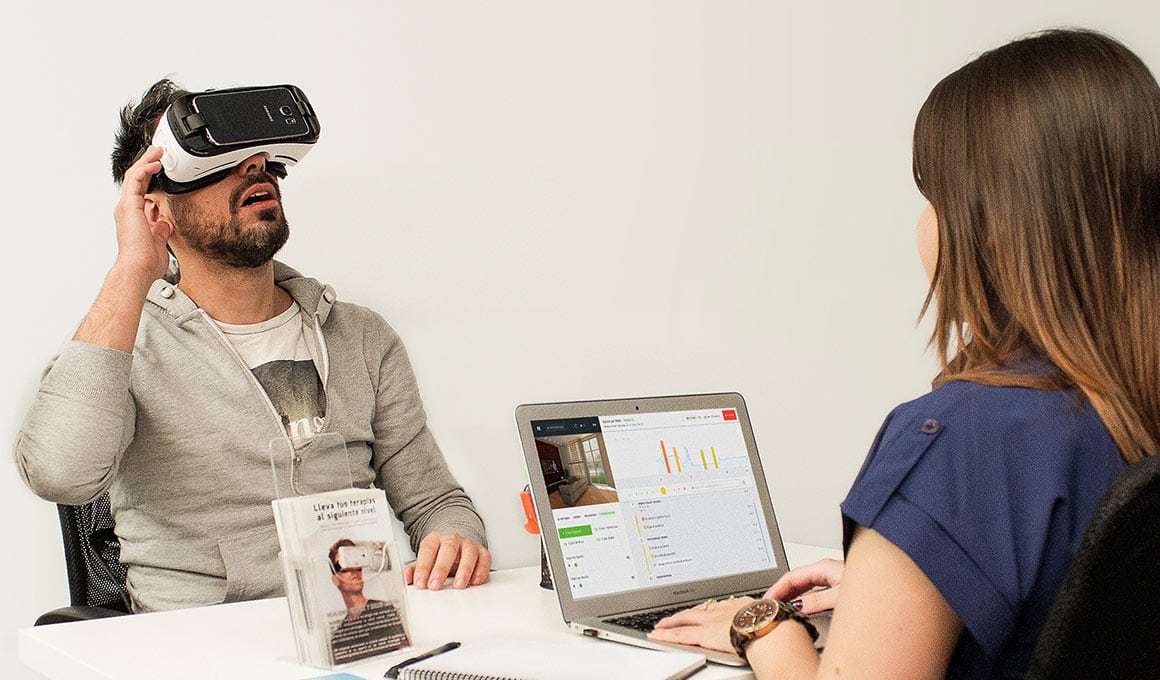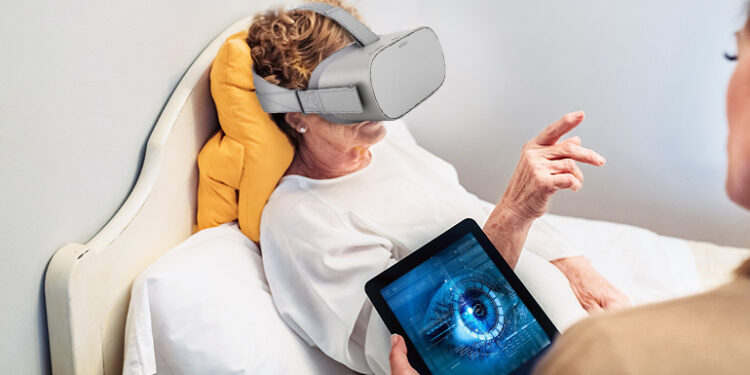The human mind is a complex and often fragile landscape. For decades, therapy has relied on traditional methods of talk therapy, exposure, and medication to address a wide range of mental and physical health conditions. However, a new and powerful tool is emerging from the world of technology: Virtual Reality (VR). Far from being just a form of entertainment, VR is a clinically validated and innovative therapeutic medium that is revolutionizing how we treat conditions ranging from phobias and anxiety to chronic pain and PTSD. By creating immersive, controlled, and customizable digital environments, VR is offering a safe space for patients to confront their fears, practice new skills, and find relief from their symptoms. This comprehensive guide will explore the science behind VR in therapy, its diverse applications, and the exciting future that lies ahead for this groundbreaking fusion of technology and mental healthcare.
The Science of Virtual Reality in Therapy

The effectiveness of VR in therapy is rooted in its ability to harness the brain’s natural responses in a controlled and deliberate way. By creating a compelling digital environment, VR can trick the brain into believing it is experiencing a real situation, which allows therapists to conduct powerful therapeutic interventions.
A. Presence and Immersion: The core of VR’s therapeutic power is presence. This is the psychological state of “being there,” a feeling of being fully immersed in a virtual environment. When a patient feels this sense of presence, their brain reacts to the virtual world as if it were real. This allows therapists to simulate a feared situation, like standing on a high ledge or speaking in front of a crowd, with the patient’s brain and body reacting accordingly.
B. Exposure Therapy: One of the most common applications of VR in therapy is exposure therapy. This is a well-established therapeutic technique used to treat anxiety disorders, phobias, and PTSD. Traditionally, exposure therapy requires a patient to confront their fears in a real-world setting, which can be difficult, expensive, or even dangerous. VR allows for a gradual, controlled, and repeatable exposure to a feared stimulus, all within a safe and non-threatening digital environment. A therapist can control every aspect of the experience, from the intensity of the stimulus to the duration of the exposure.
C. Desensitization and Habituation: Through repeated exposure in a virtual environment, the patient’s brain learns that the feared stimulus is not actually a threat. This process is called desensitization or habituation. The patient’s fear response gradually diminishes, and the brain rewires itself to no longer associate the stimulus with danger. This therapeutic effect then translates to the real world, helping the patient overcome their phobia or anxiety.
D. Cognitive Distraction: In the treatment of chronic pain and acute pain, VR is used as a powerful tool for cognitive distraction. The immersive nature of a VR experience requires a patient’s full attention, diverting their focus away from the sensation of pain. The brain has a limited capacity for processing information, and by filling that capacity with a compelling virtual experience, the perception of pain is significantly reduced. This is a game-changer for patients undergoing painful procedures or those who suffer from chronic pain conditions.
E. Neuroplasticity and Brain Training: VR is also being used to enhance neuroplasticity—the brain’s ability to reorganize itself by forming new neural connections. By engaging patients in interactive and stimulating virtual environments, therapists can help them improve cognitive skills, motor function, and even emotional regulation. This is a promising area of research for conditions like stroke rehabilitation and cognitive decline.
Diverse Applications of VR in Therapy

The applications of VR in therapy are vast and are continuously expanding as the technology becomes more sophisticated and accessible.
A. Treatment of Phobias: VR is proving to be a highly effective tool for treating specific phobias, such as fear of flying (aerophobia), fear of heights (acrophobia), fear of public speaking, and fear of spiders (arachnophobia). A patient can practice flying in a virtual airplane, walk across a high-rise plank, or give a speech to a virtual audience, all while under the careful guidance of a therapist.
B. Anxiety and Panic Disorders: For patients with generalized anxiety disorder (GAD) or social anxiety, VR can be used to simulate social situations or other anxiety-inducing scenarios. By practicing coping mechanisms and self-regulation techniques in a virtual environment, patients can build confidence and reduce their anxiety in the real world.
C. Post-Traumatic Stress Disorder (PTSD): VR is being used to help veterans and other trauma survivors confront and process their traumatic memories in a controlled and therapeutic setting. A therapy known as Virtual Reality Exposure Therapy (VRET) allows a patient to revisit a traumatic event, such as a combat scenario, with the support of a therapist, helping them to desensitize to the triggers and process their emotional response.
D. Pain Management: VR is a powerful non-pharmacological solution for managing both acute and chronic pain. It has been used to help burn victims during painful dressing changes, to distract patients during dental procedures, and to provide relief to those with chronic back pain. The immersive nature of the experience can reduce the need for pain medication and improve a patient’s quality of life.
E. Rehabilitation: In physical therapy and rehabilitation, VR is being used to make exercises more engaging and interactive. Patients recovering from a stroke or a traumatic brain injury can use VR games to practice motor skills, improve balance, and retrain their brains to perform daily tasks.
F. Relaxation and Mindfulness: Beyond therapeutic applications, VR is also being used to promote relaxation and mindfulness. VR environments that simulate tranquil natural landscapes, such as a serene beach or a peaceful forest, can be used for guided meditation and stress reduction.
The Future of VR in Therapy
The future of VR in therapy is not just about simulating environments; it’s about creating a highly personalized and integrated therapeutic experience.
First, AI and biofeedback will play a greater role. AI will be able to analyze a patient’s physiological data—such as heart rate, skin temperature, and eye movements—in real time to create a personalized and adaptive VR experience. The program could automatically adjust the intensity of the exposure or provide a more calming environment based on the patient’s stress response.
Second, the line between VR and a patient’s daily life will blur. The data from VR therapy sessions could be integrated with a patient’s electronic health record (EHR), allowing therapists to track a patient’s progress and make more informed decisions. We will also see VR used as a tool for at-home support, with patients using the technology to practice their coping skills in between therapy sessions.
Third, therapeutic VR will become more accessible. As the cost of VR headsets decreases and the technology becomes more widespread, therapeutic VR will become more accessible to people who previously had no access to these services. This will be a game-changer for people in rural areas or those with limited financial resources.
Finally, VR will be used for a wider range of conditions, from eating disorders to addiction. By creating virtual environments that simulate the triggers of an addiction or a social situation that could lead to a relapse, therapists can help patients develop new coping strategies and build resilience in a safe and controlled setting. The future of therapeutic VR is a future where the virtual world is a powerful tool for healing the real one.
Conclusion
The integration of Virtual Reality into therapy is a groundbreaking revolution that is fundamentally changing the way we approach mental and physical health. By creating immersive, controlled, and safe digital environments, VR is providing therapists with a powerful new tool for exposure therapy, pain management, and rehabilitation. It is moving us beyond the limitations of traditional therapy and into a new era where the virtual world is a catalyst for real-world healing.
However, as we embrace this technology, it is crucial that we do so with a clear understanding of the challenges and ethical considerations. The development of therapeutic VR requires a deep collaboration between technologists, clinicians, and researchers to ensure that these tools are not only innovative but also safe, effective, and ethically sound. The future of VR in therapy is a future where the line between the physical and the virtual is blurred, not to create a distraction from our problems but to provide a powerful new way to solve them. It is a future where a patient’s journey to healing can begin with the simple act of putting on a headset. The revolution in therapy has begun, and it is a virtual one.










Discussion about this post